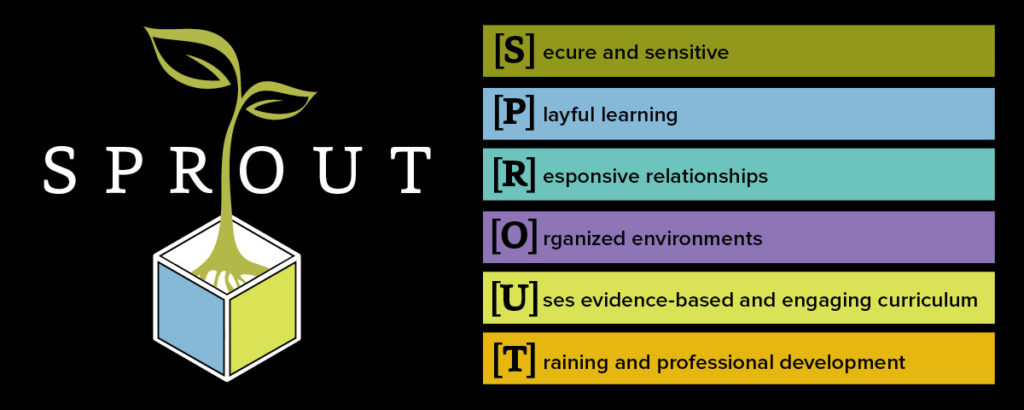
a scientifically based framework for defining quality in early education settings
Quality in early childhood settings – a research brief and checklist for parents, decision-makers, and practitioners
Nationally and in Ohio, early childhood learning has garnered increasing attention as well as growing public support and investment. Quality is central to these commitments, and rightly so, as high-quality early childhood education promises to make a lasting difference for children’s development and later life outcomes.
To capture the research on what constitutes quality – specifically on variables that may be harder to capture, like teacher-child relationships, or a child’s emotional security – the Crane Center for Early Childhood Research and Policy created a framework to identify and describe high-quality early education settings. The framework identifies six features of early education environments that enhance children’s learning and well-being, as reflected in the acronym S.P.R.O.U.T.

SPROUT intends to provide common language for defining and describing characteristics of quality in early education settings; understand the science that informs how we think about quality in early education settings, and supplement existing tools like quality rating systems that are currently used to examine the quality of early education settings.
The items below are intended to be used by parents and caregivers, practitioners, policy and decision makers, or anyone who wants assistance in observing quality.
Background
Expansion of early childhood programming is a global interest, given the strong return on investment of high-quality experiences that are associated with numerous long-term benefits to children.
Research in neuroscience and developmental psychology consistently shows that the earliest years of life are crucial for providing a sturdy foundation for building strong brains and bodies. High-quality early education experiences have short-term benefits, such as improved language, literacy, and social-emotional skills, as well as long-term benefits across the lifespan, such as higher earnings and better health as adults.
SPROUT was created is not a measurement tool, but rather as a scientifically based framework to identify those factors characteristic of high-quality early education programming. As a framework, SPROUT complements but not supplants other approaches to improving and measuring quality, including Quality Rating Improvement Systems (QRISs). QRISs are one of many ways to measure quality, but these systems vary dramatically across the nation. In some states the systems are mandatory; in others they are voluntary. Even within the states that have QRISs in place, participation rates are generally low.
Trying to define, identify, and improve the quality of children’s early education experiences requires us to speak the same language. At the end of the day, to reach something on the top shelf (or to define quality), we need a common vernacular. QRISs are a good start to standardizing the conversation about quality but still fall short. SPROUT can help bridge this gap.
